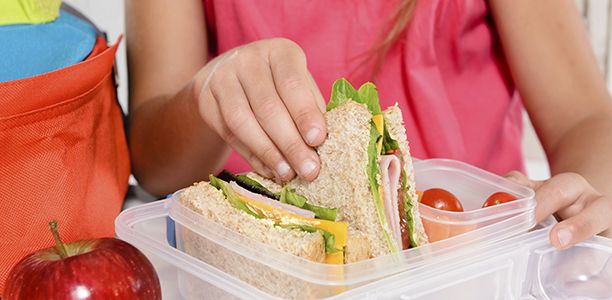The challenges faced by parents when preparing school lunchboxes are highlighted by a new study at Griffith University.
A survey of Queensland mums and dads shows vegetables are conspicuous by their absence from the typical lunchbox as parents wrestle with a range of complex factors to ensure the packed lunch is eaten.
“Parents are trying to find a compromise,” researcher Renata Anibaldi says. “While we are interested in improving nutritional content in a lunchbox, we are equally interested in the attitudes of parents and the trials and tribulations they face in preparing lunchboxes five times a week.
“What are the challenges involved? Do parents have access to healthy food? How hard is it for a parent to make the right choice, taking into consideration everything from misinformation on packaged food labels to a fussy child?”
Renata Anibaldi (left) and research student Francisco Crespo Casado are collected data from an online survey of Queensland parents and carers of primary school children.
“It’s all about understanding the challenges and working towards possible solutions rather than automatically pushing all the responsibility back onto under-pressure parents.”
The lunchbox research project, the first of its kind to be run in Queensland, was carried out at Griffith’s new Social Marketing Research Centre.
Social marketing involves the use of commercial marketing techniques to influence and facilitate behaviours that benefit individuals and communities.
Ms Anibaldi says the findings are in line with previous research in this area, showing about 80% of Australian children bring a packed lunch to school.
“When packing a lunchbox parents are also taking into account factors like texture, taste, fussiness, and whether the child is used to eating the food packed in their lunchbox. They said they would like their kids to have more salads, fruit and chicken for example, but this is weighted against whether their kids will want to eat the food in their lunchbox.”
Defeating the purpose
Ms Anibaldi says the research findings show Queensland lunchboxes are close to recommended guidelines for fruit but are markedly below par when it comes to vegetables. “Almost 70% of participants said they included no vegetables at all in a lunchbox. Our analysis to date shows 38% of lunchboxes included two pieces of fruit compared with 3.8% of packed lunches including two pieces of vegetables.
“The traditional lunchbox includes sandwiches, fruit and two snack items. The snack items are often the offending items, overladen with sugar or salt. This completely defeats the purpose.”
Research student Francisco Crespo Casado says a complex situation is made even more challenging by the influence of multimedia on young children’s tastes. “Research has shown their taste preferences are defined before they go to school,” he said.
(Source: Griffith University)










